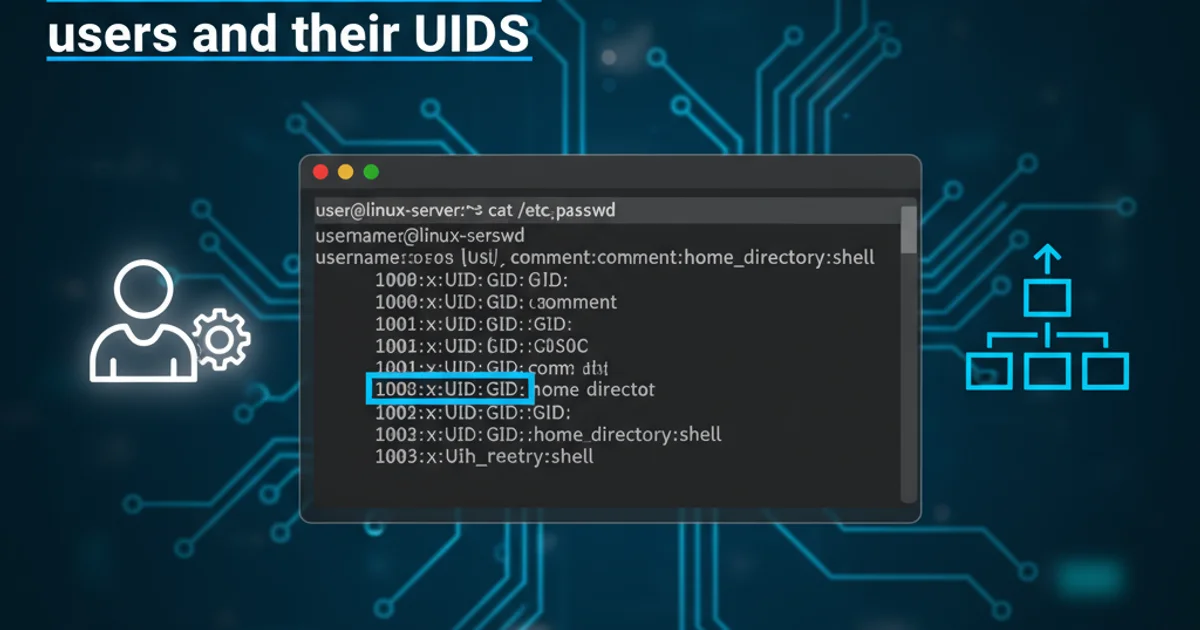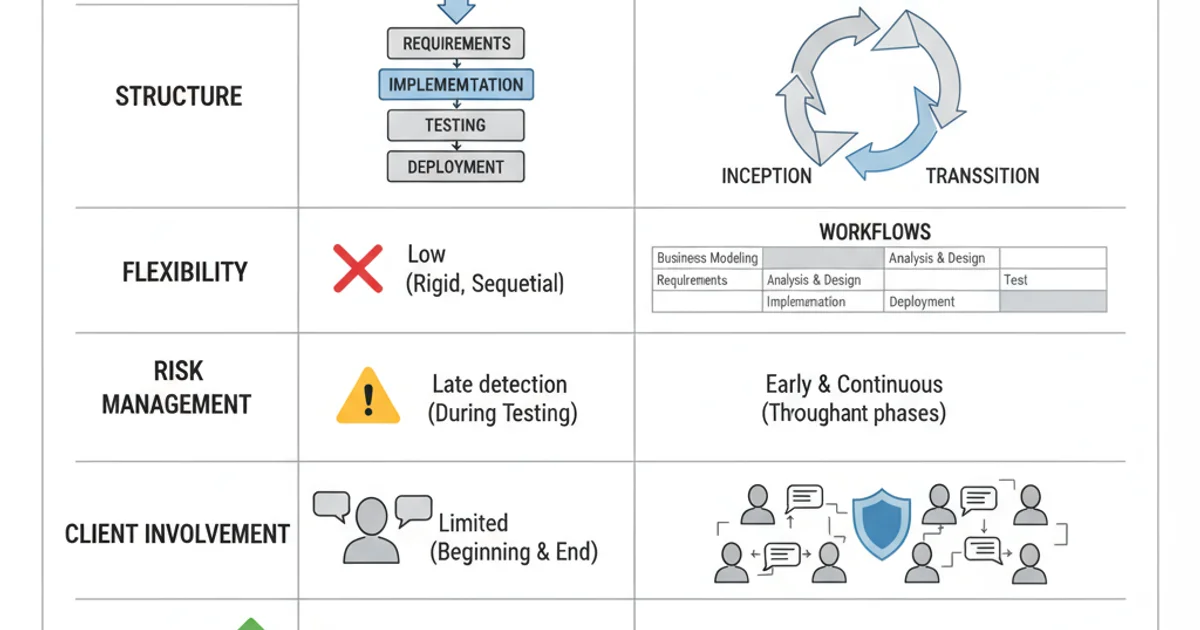(Rational) Unified Process vs Waterfall Model
Categories:
Rational Unified Process (RUP) vs. Waterfall Model: A Comparative Analysis

Explore the fundamental differences, strengths, and weaknesses of the Rational Unified Process (RUP) and the traditional Waterfall Model in software development.
In the realm of software development methodologies, choosing the right process model is crucial for project success. Two prominent approaches that often come into discussion are the Waterfall Model and the Rational Unified Process (RUP). While Waterfall represents a classic, linear approach, RUP offers an iterative and incremental framework. Understanding their core principles, advantages, and limitations is key to making informed decisions for your projects.
The Waterfall Model: A Linear Progression
The Waterfall Model is one of the oldest and most straightforward software development methodologies. It follows a sequential design process, where each phase must be completed and reviewed before the next phase can begin. This linear progression makes it easy to understand and manage, especially for projects with well-defined requirements and stable environments. However, its rigidity can be a significant drawback in dynamic projects.
flowchart TD
A[Requirements Gathering] --> B[Design]
B --> C[Implementation]
C --> D[Testing]
D --> E[Deployment]
E --> F[Maintenance]The sequential phases of the Waterfall Model
Rational Unified Process (RUP): An Iterative and Incremental Approach
The Rational Unified Process (RUP) is an iterative and incremental software development process framework. It is use-case driven, architecture-centric, and iterative and incremental. RUP emphasizes early and continuous feedback, risk management, and adaptability. Unlike Waterfall, RUP allows for requirements to evolve and incorporates feedback throughout the development lifecycle, making it more suitable for complex and evolving projects.
flowchart LR
A[Inception] --> B[Elaboration]
B --> C[Construction]
C --> D[Transition]
D --> A
subgraph Iteration 1
B1[Requirements] --> B2[Analysis & Design] --> B3[Implementation] --> B4[Test]
end
subgraph Iteration 2
C1[Requirements] --> C2[Analysis & Design] --> C3[Implementation] --> C4[Test]
end
B --> Iteration 1
C --> Iteration 2
Iteration 1 -.-> C
Iteration 2 -.-> DOverview of the RUP lifecycle with its four phases and iterative nature
Key Differences and When to Choose Which
The fundamental difference between Waterfall and RUP lies in their approach to change and feedback. Waterfall is rigid and linear, assuming stable requirements from the outset. RUP, conversely, embraces change through its iterative cycles, allowing for continuous refinement and adaptation. This makes RUP more flexible but also potentially more complex to manage due to its parallel activities and continuous feedback loops.

Comparative table: Waterfall vs. Rational Unified Process
When deciding between these two methodologies, consider the following factors:
- Project Size and Complexity: For small, simple projects with clear requirements, Waterfall might suffice. For large, complex, or innovative projects, RUP's adaptability is invaluable.
- Requirement Stability: If requirements are expected to change or are not fully understood at the start, RUP is the better choice. Stable requirements favor Waterfall.
- Client Involvement: RUP encourages continuous client feedback, leading to better alignment with business needs. Waterfall typically involves client feedback only at phase gates.
- Risk Management: RUP's iterative nature allows for early risk identification and mitigation. Waterfall tends to defer risk discovery until later phases, making them more costly to resolve.